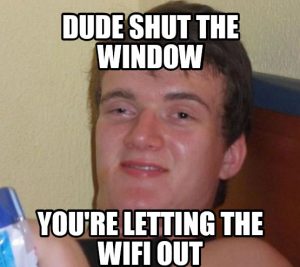 Has any of us here ever thought about how NASA is able to receive accurate data from a spacecraft that’s 4.67 billion miles away, but we instantly lose wifi signal the moment we walk into the kitchen? It’s not acceptable!
Has any of us here ever thought about how NASA is able to receive accurate data from a spacecraft that’s 4.67 billion miles away, but we instantly lose wifi signal the moment we walk into the kitchen? It’s not acceptable!
Today you can even enroll in the fastest cable internet plan, surfing on a $9000 custom-built beast PC and yet you may still experience the very same spotty performance that’s been haunting millions of Americans everyday when all we want after dinner is “netflix and chill”. Thing like that could easily go from being annoyed to using your router as a target gun practice. But before you are driving your car through the wall to open up coverage, try a few of our advice below and see if that could remedy the situation. I’m 82% out of 90% sure it’ll do the job.
1. Switch to a Less Crowded Channel
Most wireless transmission runs at 2.4GHz frequency, unless your router supports dual-band which also broadcasts at a much less crowded 5GHz frequency. So if your router is unfortunately single-band, then your microwave, age-old cordless phones, baby monitors or even some car alarm will very likely interfere its signal.
The interference can significantly reduces the transfer rate or completely destroy a stable communication between the computer and the wireless router. On the other hand, car alarm sometimes overlaps channel 6 and 11 of the 2.4GHz frequency that stutters wireless traffic. These two channels are known to be the most commonly used wifi networks.
Now with that in mind, perhaps you want to logon to your router’s configuration panel and switch to a less crowded channel other than the typical 1, 6 and 11 spectrum.
If you do not know which channel is best, I highly recommend to try the free open-source software called inSSIDer. This application is extremely helpful once you get the hang of it. There are also a bunch of Wifi analyzer apps for iOS and Android phone if they are more convenient for you to obtain. Either way, you’ll be able to figure out which channels are the most crowded and run from them.
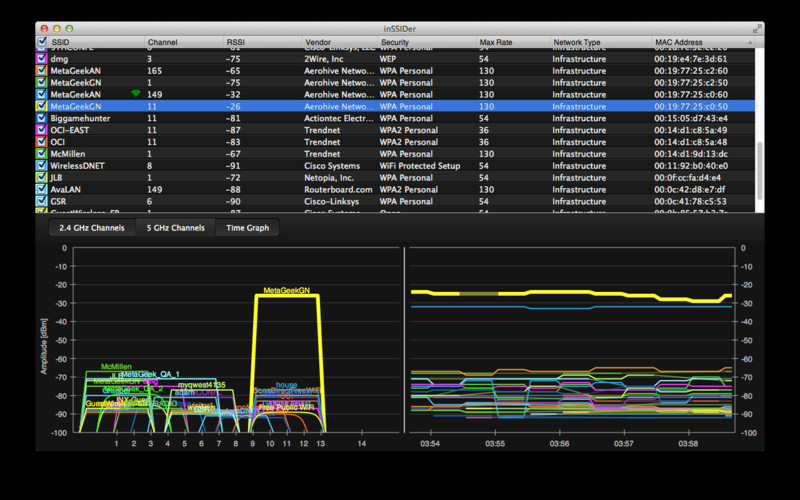
The main window of inSSIDer includes the detail list of all surrounding networks, their unique ID addresses, type of network, router vendors, security measurement and of course, what channels are being used most. Once you’ve found out, you can change the channel number in the Wireless setting page of the router’s configuration panel –refer to the router’s manual or ask Google, usually the address is 192.168.0.1. My channel option is currently set to Channel 5.
- JD Power Award ---Highest in customer satisfaction for wireless routers 2017 and 2019
- Wave 2 Wireless Internet Router, 600Mbps on the 2.4GHz band and 1300Mbps on the 5GHz band,...
- MU-MIMO Gigabit Router, Three simultaneous data streams help your devices achieve optimal...
- Boosted Wi-Fi Coverage, Beamforming technology delivers a highly efficient wireless...
- 2.4 GHz and 5 GHz Concurrent Dual-Band Transmissions for Strong Signal Strength and...
- Gigabit Ethernet Ports for the Fastest, Most Reliable Internet Performance
- Download Master for Wireless Data Storage and Access to Router-Connected USB Storage...
- Expanded Wireless Coverage with 3 Detachable High-Powered Antennas
2. Position of the Wireless Router and why does it matter?
Imagine how an airplane takes people from one location to another. First it takes off to a certain height above cloud level, then flies its way until it reaches the destination. Now you do not see airplanes fly too close to the ground because if they do, they will hit tall buildings and crash and kill people and destroy stuffs everywhere.
The concept is simple yet it has a point. It makes sense when you leave your wireless router too low to the ground, or on the floor and you cannot get a good coverage.
The reception is like an airplane, it becomes worse because there is too much interference at the lower ground and those items potentially prevent the signal from reaching the destination. This does not mean you should move your router to the roof, but it is highly advised to place it somewhere higher inside.
3. Make Use of Aluminum Foil
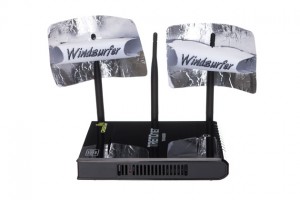 Copper wire, beer can or Aluminum Foil knows to have high deflection on wireless transmission. They could give a little boost to the wifi reception that is degraded over the distance.
Copper wire, beer can or Aluminum Foil knows to have high deflection on wireless transmission. They could give a little boost to the wifi reception that is degraded over the distance.
If your router has an antenna then you can try to make an amplifier using Aluminum Foil that could be found in any kitchen. In many instances, you can quickly see a 10-15% boost of signal strength overall. I also find this DIY Wifi Extender topic is quite practical by using the Tin Can to amplify the connection.
p.s Beer can can work just as well! If succeeded, you probably could start stocking all the beers, when asked just say — “bae i’m opening a business involves selling innovative aluminum foil wireless range booster device”. And she’ll be like “are you tripping?”.
4. Antenna Replacement
This method applies to only router/adapter that has detachable antenna, however you still can get some helpful tips if your router or adapter doesn’t have removable antenna. Most Verizon FIOS routers have detachable antennas so this has helped a lot of our readers in the past.
Here’s something you should know : all typical internal or external wireless antennas that come with your router are omni-directional. That means the reception broadcasts in the fan-like shape to all different directions. This is great in a closed-room but if you have a big home you may have very poor coverage on the furthest ends. Thus, you should relocate the router to the center of the house if possible. If that is unlikely to happen, you will need to get a better antenna.
This solution is not free like others above, but it guarantees a stronger improvement on the router wireless transmission. The best choice of antenna is the TP-Link USA 2.4GHz 8dBi Desktop Omni-directional Antenna. You could also try the stronger antennas by AMPED Wireless such as High Power 12dBi Omni-Directional Wi-Fi Antenna or ASUS Omni High Gain 9dBi Antenna. It is very rare that you need to go with anything above 12dBi because as it is more powerful, it is also dumping a lot of noise in to the reception. What you will eventually get is a very sluggish connection. So stick with the optimal said antenna options.
|
TP-Link 2.4GHz 8dBi Indoor Desktop Omni-directional Antenna, 802.11n/b/g, 1.3m/4ft cable, Magnetic Base (TL-ANT2408C)
Asus Omni Antenna (WL-ANT-191)
|
5. Adding a Wireless Repeater / Range Extender
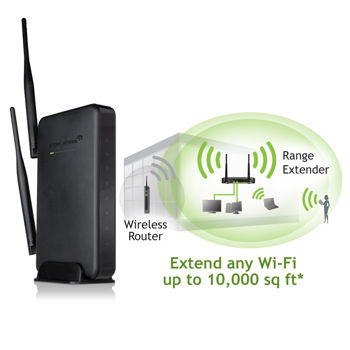 If all else fail, you probably have to setup a wireless repeater into your home network. Repeaters are a bit more pricey, it should be one of the last options to consider.
If all else fail, you probably have to setup a wireless repeater into your home network. Repeaters are a bit more pricey, it should be one of the last options to consider.
In order to extend the network, the Wireless repeater will be positioned in the middle distance between the router and the end-devices.
By using a Wireless repeater, you create the secondary network from your original one. For example, my original wireless network named “FBI Flower Van”, the Wireless Repeater will connect to this connection and create a new network name, such “ur mama wifi”.
As you could have guessed, the wireless reception in this setup is stronger and more powerful. However, there will be a little latency in the connection; because now the data have to hop from your computer to the repeater then to the router and modem before it finally travels elsewhere on the Internet. The lag is not totally unacceptable and sometimes unnoticeable for daily use, but online gamers may not be able to tolerate the situation.
These following repeaters that I got my hands on are by Neatgear and TP-Link Technology. They are very decently priced options in the market and very easy to use for non tech-savvy person. You will need to connect one of your computer to the device for the initial setup and that’s all.
- WiFi powerline adapter provides up to 600Mbps Ethernet over power, up to 300Mbps WiFi....
- As network adapters supporting HomePlug AV, easy to add multiple adapters and works under...
- Power saving automatically reduces power consumption by up to 85%
- Wired speeds up to 600Mbps and wireless speeds up to 300Mbps for lag-free HD video...
6. Other Recommended Tips
- Always keep your router firmware up to date. Most routers have an auto update checking button, so should you run it often to get the latest firmware for your device. These fixes usually improve performance and other important security measurements.
- Use the same wireless standard throughout the network. If you have wireless N router and force it to run in compatible mode with a/b and g, you will experience a bad drop in transfer rate.
I once tested this theory on my old Neatgear router by running on two different modes : a/b/g/n and N-only separately. The difference is 600-800kbps vs. 1.2mbps accordingly, on a slow cable connection. This means the impact has a greater hit on faster Internet connection, therefore you should totally be aware of this setting on your router. Strike for the best mode your router can support. On the other note, since my PSP only accepts Wireless b while PS3 takes Wireless g standard, I have to stick with compatible mode as long as I’m still playing them. *sigh intensified* … - It’s preferred to use the same branded products. However, it’s actually more important to have good set of router and adapter, despite what brand it comes from. Keep an eyes on those that offer single or double external antennas adapters like those below.
- USB WiFi Adapter: 802. 11N N300 speed allows for great video streaming and internet...
- Increased Range: Dual external antennas deliver enhanced reception and transmission...
- Secure WiFi: Easy one-touch wireless security encryption with the Quick Security Setup...
- Industry Leading Support: 2-year and free 24/7 technical support
- Party Essentials super fun quality plastic 7 inch neon party/salad bowls
- Each package includes 20 colorful party bowls; 5 each of neon pink, neon blue, neon green...
- Classic styling; hand washable; reusable; disposable; combine them with neon plates, cups...
- Ideal for catering, food service, picnics, weddings, buffets, family reunions and everyday...





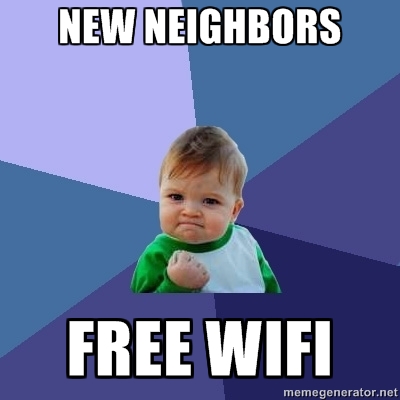


You really made this simple for a rookie and I look forward to reading more of your posts.
Great tips you have to describe here for increasing range of a weak wireless signal.Thanks for sharing such a wonderful article.I will try to keep touch with your site.
First off wireless anything degrades as distance increases or solid objects come in between router and device. 2.4 ghz is better than 5 ghz in this respect and ideally a wider spectrum of 2.4 ghz would have been more appropriate and useful than 5 ghz. Simply because the 5 Ghz band is not ever going to function as well with distance or objects. Yes the bandwidth (speed) is there for 5Ghz but range is not. So the recommendation to improve 5Ghz is repeaters or multiple router access points. Multi level dwellings just adds to this issue. Let’s face it, wireless deals with a lot of pitfalls in terms of reliability. If you want a truly reliable connection your going to have to use a wired connection. But that said, even today’s wireless connections will out perform most internet connections for most people. It will provide plenty of speed for much of what people use the internet for. I have two suggestions, first stay away from ISP devices as much as possible. Buy your own hardware compatible with your ISP. Second, use the band that best suits your device. Don’t always opt for 5 Ghz just for the speed alone. Use 2.4 Ghz if you plan to wonder around the house. Use 5Ghz only when your close to access point and need the added speed. In most cases you will be surprised how little speed you really need for streaming video even HD. The cable companies love to over sell you speed and then provide you with a router/modem that in wireless mode won’t even be able to use that speed fully. Especially in 2.4 ghz band where outside interference can dramatically reduce speeds at times. I have several neighbors who crank up channel banding to falsely gain speed only to cause more channel interference for everyone else. Use 20mhz bandwidth settings not 40mhz for 2.4 Ghz. Not unless you live far away from other access points. This is especially important if you use more than one in your own house. They will work against one another.
This gentleman knows what he’s talking about ^
100% agreed. Using 20MHZ has improved my connectivity as well.
And I use 5Ghz in my gaming room.
Dear Mr John S I do not know anything about IT but that is the best sound answers as to why this stuff does not work. And I am glad you said that about the cable companies. They know what they need to do to make the product work effectively ; sad they won’t implement these suggestions.